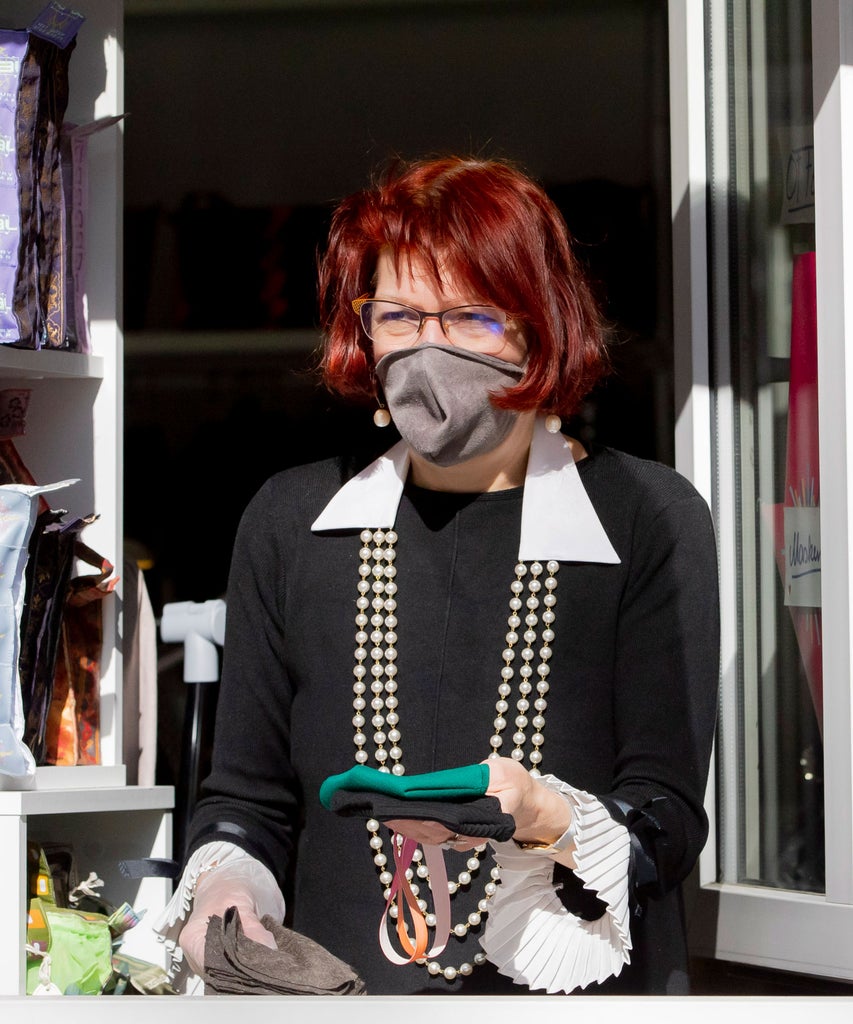These DIY Face Mask Materials Are Best, According To Scientists
April 05, 2020DMT Beauty#DMTBeautySpot #beauty

The Centers for Disease Control and Prevention updated its guidelines on wearing face masks in public to recommend that everyone, sick or not, cover their faces with fabric while saving medical-grade masks for health care workers. However, not all fabrics are created equal. Scientists around the country have conducted experiments on which common, at-home fabrics are the most effective at filtering microscopic particles.
While a simple face covering can block many outgoing germs, such as a cough or sneeze of someone carrying the virus, there are more specific recommendations on what homemade masks best protect wearers from incoming germs.
The CDC posted a no-sew mask pattern using a bandana and a coffee filter as well as a video tutorial for using rubber bands and folded fabrics found at home. The recommendation that everyone wear masks is in part to keep germs in, but also protecting people from inhaling viral particles.
The change in recommendation came from new information related to symptoms of the coronavirus. A significant number of people with the virus are asymptomatic, showing little to no symptoms, reports the CDC. There is also an incubation period when people who have contracted the virus have not had it long enough for any symptoms to emerge. In both instances, these people are still contagious and run the risk of getting others sick.
While these homemade face coverings offer a sense of comfort, they are by no means a complete solution. Dr. Deborah Birx, the White House coronavirus task force response coordinator, said masks should be considered an “additive” to social distancing and not a substitute.
Wearing a mask does not mean that you and your friends can now return to picnics in the park and house parties. In a news conference last week, Birx said that people often feel “an artificial sense of protection because they are behind a mask. Don’t get a false sense of security.” Wearing a protective face covering is meant to offer additional protection for the times we absolutely have to leave the house for essential things such as food and medicine.
According to a study conducted by Dr. Scott Segal, chair of anesthesiology at Wake Forest Baptist Health in partnership with Wake Forest Institute for Regenerative Medicine, the best homemade masks they tested for filtering the most particles were constructed from a heavyweight “quilters cotton” with a thread count of at least 180 because its weave is thicker and tighter, which allows for fewer particles to pass through.
The least effective fabrics were scarves and cotton bandanas. However, bandanas, when layered with layers of a filtration system such as a few coffee filters, were significantly more effective.
One of the most common — and surprisingly effective — materials were 600-thread count pillowcases or fabric similar to flannel pajamas when doubled up. Scientists found that, when folded into four layers, high-thread count pillowcases offered up to 60% filtration. Using HEPA furnace filters and vacuum cleaner bags were also among the best homemade alternatives. For reference, the typical surgical mask filters out 62-65% of particles while N95 masks, the ones that are recommended only be reserved for health care workers, filter out 95% of particles.
Unsure of what fabrics to use? Scientists say a simple light test can help you choose which of your options is the best mask material. “Hold it up to a bright light,” Segal told The New York Times. “If light passes really easily through the fibers and you can almost see the fibers, it’s not a good fabric. If it’s a denser weave of thicker material and light doesn’t pass through it as much, that’s the material you want to use.”
To make sure masks are the most effective they can be, regular washing is essential. According to CDC guidelines, washing masks regularly in a washing machine is sufficient for cleaning cloth masks. Segal advises avoiding bleach and harsher chemicals “until we know the effect on the fabric’s effectiveness.”
For washing any fabrics, clothing or masks that you wear when out in public, it is important to take precautions when washing them. Using CDC flu virus guidelines, clothing and reusable masks should be washed at a temperature of at least 167 degrees. That is the minimum temperature proven to kill the flu virus. Chlorine, hydrogen peroxide, alcohol, and detergent are all effective cleaning products.
Your best bet is to clean all clothing and cloth masks using the warmest water setting and making sure they are dried completely. Also, remember to wash your hands or wear gloves when doing the laundry and make sure your hands are clean before touching anything else.
Like what you see? How about some more R29 goodness, right here?
Doctors Are Going Viral & Getting Fired
There May Already Be A Vaccine For Coronavirus
Why Am I So Desperate For A Coronavirus Boyfriend?
DMTBeautySpot
via https://www.DMTBeautySpot.com
Sarah Midkiff, Khareem Sudlow

0 comments